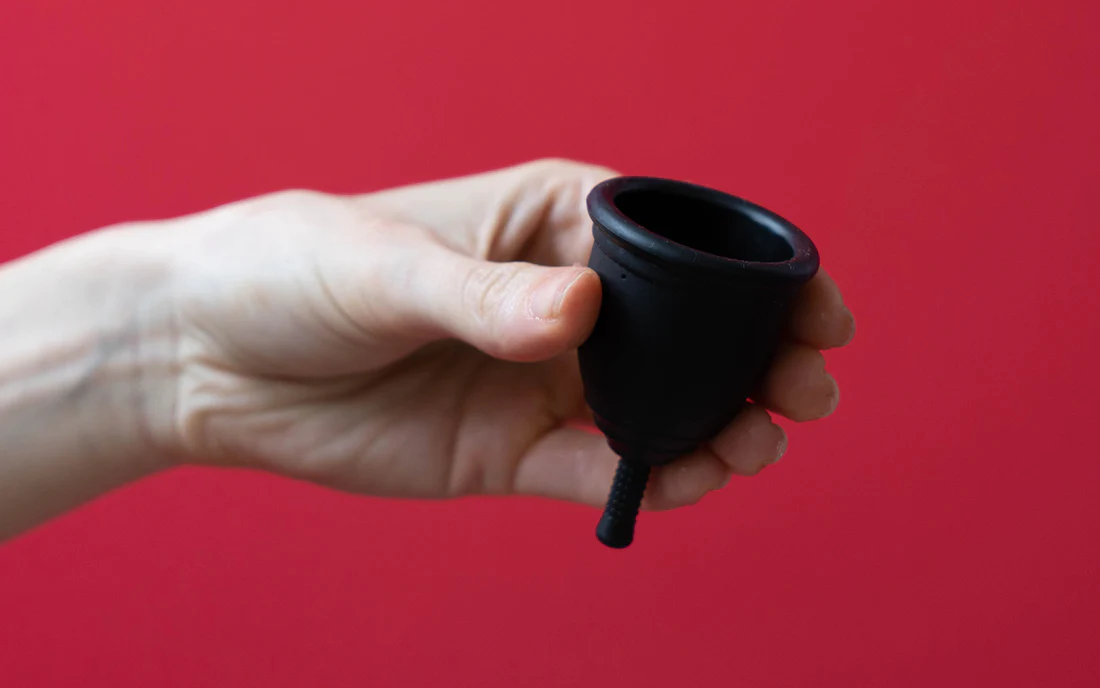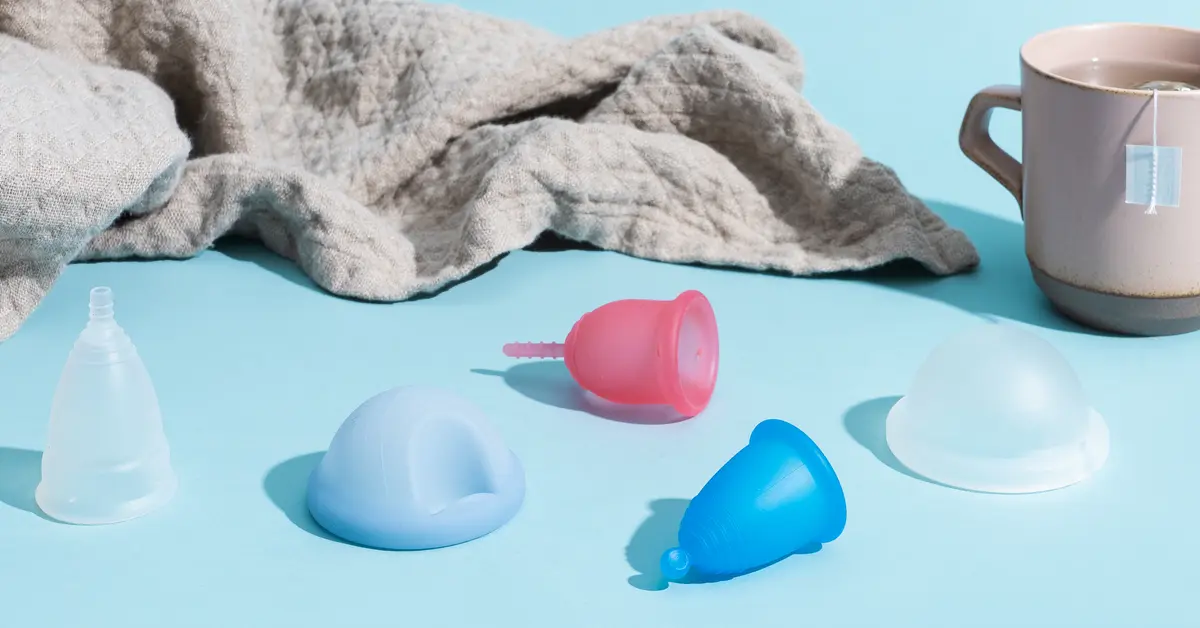Today, we tackle a common question that many menstruators have: Can you sleep with a menstrual cup? If you’ve ever wondered about using a menstrual cup overnight but weren’t sure if it’s safe or practical, you’ve come to the right place. In this article, we’ll explore the ins and outs of sleeping with menstrual cups, providing you with all the information you need for a restful and worry-free night’s sleep. So, let’s dive in and put any concerns to rest!
Contents
Can You Sleep with a Menstrual Cup?

Yes, you can absolutely sleep with a menstrual cup! In fact, it’s not only safe, but it can also lead to fewer leaks and less mess compared to other menstrual hygiene products. So, if you’ve been wondering whether you can trust your menstrual cup for overnight use, rest assured that you can. Say goodbye to the days of worrying about stained underwear or shifting pads during the night.
Menstrual cups are designed to be worn for up to 12 hours, making them perfect for a worry-free night’s sleep. They have a high capacity and can hold up to 30 milliliters of period fluid, depending on the size of the cup. This means they can hold more blood than other menstrual products, providing you with reliable protection throughout the night.
Choosing the right size of menstrual cup is important for a secure fit and comfortable sleep. While size selection may depend on various factors, such as age, childbirth history, and flow intensity, it is not a major determinant for most people. However, those with a heavy flow may need to consider a larger cup size.
To ensure a comfortable sleep overnight, it’s best to empty your cup before going to bed. This will help prevent any potential leaks and ensure a worry-free night’s sleep. Simply follow the recommended insertion technique for your cup, which usually involves folding it into a C-shape and gently inserting it into the vagina. The cup will then pop open and create a seal, providing you with reliable protection throughout the night.
With these tips and debunked menstrual cup myths, sleeping with a menstrual cup becomes a less daunting task. So go ahead and enjoy a comfortable and worry-free night’s sleep with your menstrual cup.
Safety Concerns and Precautions

Proper Insertion and Removal
When it comes to sleeping with a menstrual cup, proper insertion and removal are key to ensuring a safe and comfortable experience. Here are some important points to keep in mind:
- Wash your hands: Before inserting or removing your menstrual cup, it’s crucial to wash your hands thoroughly with soap and water to minimize the risk of introducing any harmful bacteria into your vaginal area.
- Relax and find a comfortable position: Find a comfortable position that allows you easy access to your vagina. This could be standing with one leg raised, squatting, or sitting on the toilet. Relax your muscles and take your time to avoid any unnecessary discomfort.
- Fold and insert: Fold your menstrual cup into a shape that feels most comfortable for you. There are various folding techniques you can try, such as the C-fold or the punch-down fold. Gently insert the folded cup into your vagina, aiming towards the back, and make sure it unfolds fully once inside.
- Check the seal: Once your menstrual cup is inserted, run your finger around the cup’s base to ensure that it has fully opened and created a seal against the vaginal walls. This will help prevent leaks while you sleep.
- Practice removal: When it’s time to remove your menstrual cup, gently squeeze the base to release the seal. Slowly and carefully pull the cup out, tilting it slightly to avoid any spillage. Empty the contents into the toilet, rinse the cup with water, and reinsert if needed.
Leakage and Stains
One of the main concerns when sleeping with a menstrual cup is leakage and staining. However, with the right technique and proper cup positioning, you can minimize the risk of leaks and stains. Here are some tips to help you avoid any unwanted surprises:
- Choose the right size: Selecting the correct size of menstrual cup is crucial for a secure fit and leak prevention. Cups come in different sizes based on age, childbirth history, and cervix height. Make sure to carefully read the manufacturer’s guidelines or consult with a healthcare professional to find the cup size that suits you best.
- Empty your cup before bed: To reduce the chances of leaks during the night, it’s recommended to empty your menstrual cup right before going to sleep. This will ensure that the cup has enough capacity to collect your flow throughout the night.
- Position the cup correctly: Proper cup placement is essential to prevent leaks. The cup should sit low in your vagina, with the rim sitting just below your cervix. If you’re unsure about the positioning, try adjusting the angle or reinserting to achieve a better fit.
- Use backup protection if needed: If you have heavy flow or are concerned about leaks, you can use backup protection, such as wearing a pantyliner or placing a towel on your bed. This extra layer of protection can give you peace of mind during your sleep.
Remember, every body is different, and it may take some trial and error to find the best technique and cup size that works for you. Don’t be discouraged if you experience some leaks or stains initially. With practice and patience, you’ll soon discover the perfect combination for a worry-free night’s sleep with your menstrual cup.
Choosing the Right Menstrual Cup for Sleep

When it comes to sleeping with a menstrual cup, choosing the right cup for your needs is essential. Here are a few key factors to consider:
1. Size Matters
Finding the right size menstrual cup is crucial for a comfortable and leak-free night’s sleep. Most cups come in two sizes: small and large. The size you choose depends on factors such as age, childbirth history, and flow intensity.
- If you are under 30 years old, haven’t given birth vaginally, and have a light to moderate flow, a small cup may be suitable for you.
- If you are over 30 years old, have given birth vaginally, or have a heavy flow, a larger cup may provide better coverage and capacity.
2. Softness and Flexibility
Consider the softness and flexibility of the cup material when selecting a cup for sleep. Softer cups are generally more comfortable during sleep as they conform to your body’s movements. Look for cups made from medical-grade silicone or high-quality elastomer for optimal comfort.
3. Capacity
To ensure a worry-free night’s sleep, choose a cup with a sufficient capacity to accommodate your flow. Most menstrual cups can hold up to 30 milliliters of fluid, but some cups offer even higher capacities. If you have a heavy flow, opt for a cup with a larger capacity to minimize the need for emptying during the night.
4. User Reviews
Reading reviews from other cup users can provide valuable insights into the performance and comfort of different menstrual cups. Look for cups with positive reviews specifically regarding sleep. This can help you narrow down your options and choose a cup that is suitable for overnight wear.
Tips for Comfortable Sleep with a Menstrual Cup
When it comes to getting a good night’s sleep with a menstrual cup, there are a few tips that can help ensure your comfort throughout the night. Here are some suggestions to make your sleep experience with a menstrual cup as comfortable as possible:
- Choose the Right Size: Selecting the correct size of the menstrual cup is crucial for a comfortable sleep. Consider factors such as your age, childbirth history, and flow intensity when determining the size that’s right for you. A cup that is too small may not provide enough leakage protection, while a cup that is too large may cause discomfort.
- Opt for Softness and Flexibility: The softness and flexibility of the cup material can greatly impact your comfort during sleep. Softer cups tend to be more comfortable, especially when lying down. Look for cups made of medical-grade silicone or similar materials that offer both softness and flexibility for a better night’s sleep.
- Consider Capacity: Another important factor to consider is the capacity of the menstrual cup. Cups with larger capacities can hold more fluid, allowing for a worry-free night’s sleep without the need for frequent emptying. Look for cups with a capacity of at least 30 milliliters to ensure adequate protection throughout the night.
- Position the Cup Correctly: Proper positioning of the cup is crucial for comfort during sleep. Make sure the cup is fully inserted and forms a seal against the vaginal walls. This will help prevent leakage and ensure a comfortable fit throughout the night.
- Read User Reviews: Before purchasing a menstrual cup for sleep, it’s always a good idea to read user reviews. These reviews can provide valuable insights into the performance and comfort of different cups, helping you make an informed decision.
Conclusion
Choosing the right menstrual cup for sleep is crucial for a comfortable and worry-free night’s rest. Factors such as age, childbirth history, and flow intensity should be considered when selecting the correct cup size. The softness and flexibility of the cup material also play a role in ensuring comfort during sleep, with softer cups being recommended. Capacity is another important factor, with cups that can hold up to 30 milliliters of fluid being suggested for uninterrupted sleep. Reading user reviews can provide valuable insights into the performance and comfort of different cups. Proper positioning of the cup is essential for comfort during sleep. By taking these factors into account, you can find the perfect menstrual cup that allows you to sleep soundly and confidently throughout the night.
Frequently Asked Questions
Why does my menstrual cup leak when I pee?
If your menstrual cup leaks after you pee, it might have shifted while sitting on the toilet. Simply remove and re-insert the cup to prevent leakage.
What happens if you leave a menstrual cup in for a year?
Leaving a menstrual cup in for a year carries a small risk of infection. However, studies have shown that menstrual cups are safe and effective alternatives to other menstrual products.
How often is too often to empty a menstrual cup?
You can safely use your menstrual cup for up to 12 hours before emptying and rinsing it. This means you can have a worry-free night’s sleep without leaks.
Are menstrual cups bad for pelvic floor?
Menstrual cups do not pose any risk to those with a prolapse and can be a great alternative to pads and tampons. Just break the seal when removing to avoid any issues with organ positioning.
What’s the longest you can leave a menstrual cup in?
On heavy days, you may need to rinse or change your menstrual cup more frequently. However, you can wait up to 12 hours, the recommended maximum time, before changing your cup.
I am a medical student with experience and interest in Women’s health and well-being.